Well, I’m still alive.
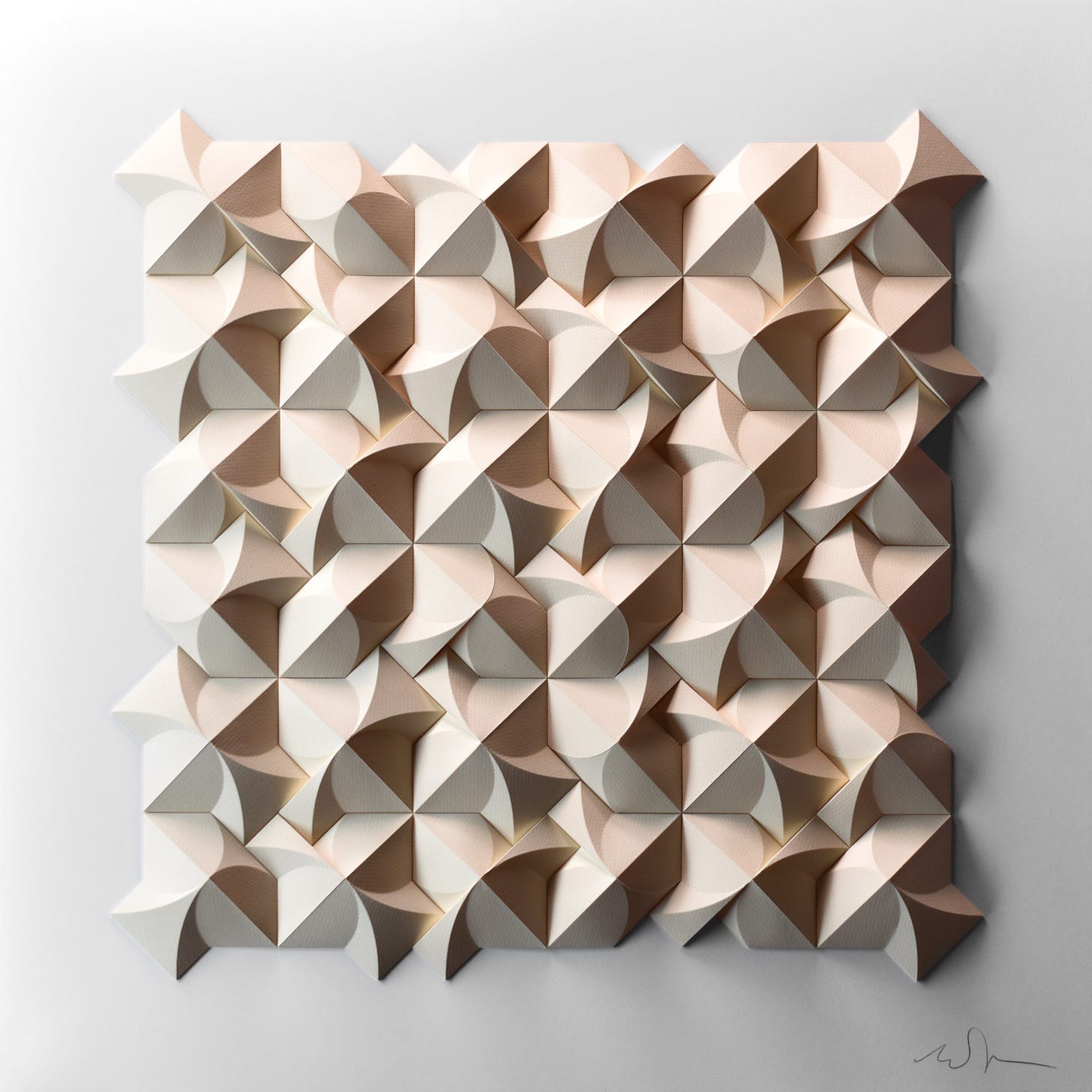
Without getting into too much detail, I’ve been in and out of the hospital and am just now finally beginning to feel like myself again. Being back in the studio and making work—and having ideas again—has been so missed.
With my health compromised, I had to make the difficult choice to cancel the upcoming workshops at both Penland and Anderson Ranch this summer. Luckily, they’ve found some excellent replacements: I’m glad to report that Penland will have Heather Peters teach a handmade paper workshop and that Simon Arizpe agreed to fill in at Anderson Ranch teaching paper engineering. I would take both their workshops if I could. (We are hoping to reschedule the original workshops for 2025.)
While I recovered, I didn’t have much brain capacity to think of new pieces. Instead, I spent a lot of time thinking about how I make work. I’ve found that often something happens in my work that is not my initial focus, but becomes crucial in making the work work. It happens alongside my original intent—it’s tangential or something I cannot see but instead perceive.
The Omoplata series negotiates negative and positive space with curve folding. I plan out the pieces in sketchbooks, paying as much attention to what happens between the shapes as I do to the shapes themselves.
A well-designed positive shape won’t always yield a pleasing composition but when it does, a pattern often emerges that is unpredictable.
It is this unknown final form that keeps me investigating. The piece becomes a conversation; one element shifts, and a new pattern emerges. I try to work with the shapes and respond authentically. Adding in color and lighting can take these bits and either enhance or obfuscate them. When I am fighting to control the design, the end result often feels restricted and forced. I’ve never ridden a horse, but I imagine if you force a horse to do something it does not want to do, neither you nor the horse is happy.
Editing is the majority of this process. The amount of pieces I don’t prototype far outweigh the ones that get assembled. I enjoy this struggle—the tension of almost having something work. I believe the joy when it does is palpable to the viewer.
In my Unholy pieces, I plan the works out in a way that is both laborious and systematic. Without giving away too much magic (I hope), I might begin with a loop in space and divide it into sections. Each point on the loop becomes a loci for my base patterns to reach. I map out each shape as part of a literal closed loop—an analemma.
Shape #1 might rejoin #36 and continue onward to a second loop. Sometimes #1 rejoins #12 but it appears rotated 60, 120, or 180 degrees. Once the set is designed, some patterns stagger, others run linear. Some shift in space and others grow to fill it. I truly have no idea what a form will look like while I am designing it. I am only interested in the conversation that happens as the work tells me how it needs to be. It is a dance; it is a letting go.
This process is diametrically opposed to most parametric-designed work and (God forbid) AI-prompted artwork.* Control is a conversation that moves in one direction toward an idealized optimization. It misses all the wonderful moments of mistake, interest, hidden intent.
Focusing on one element and allowing a second thing to happen concurrently is as valid a method of working as having a solid plan. Here, a second (or third) hidden aspect is revealed only when the work is completed. This mirrors the multiple readings a work might have as it rewards time spent with it.
Here are some new works that have revealed themselves since the last newsletter. As always, don’t hesitate to reach out if you’d like to get something commissioned.
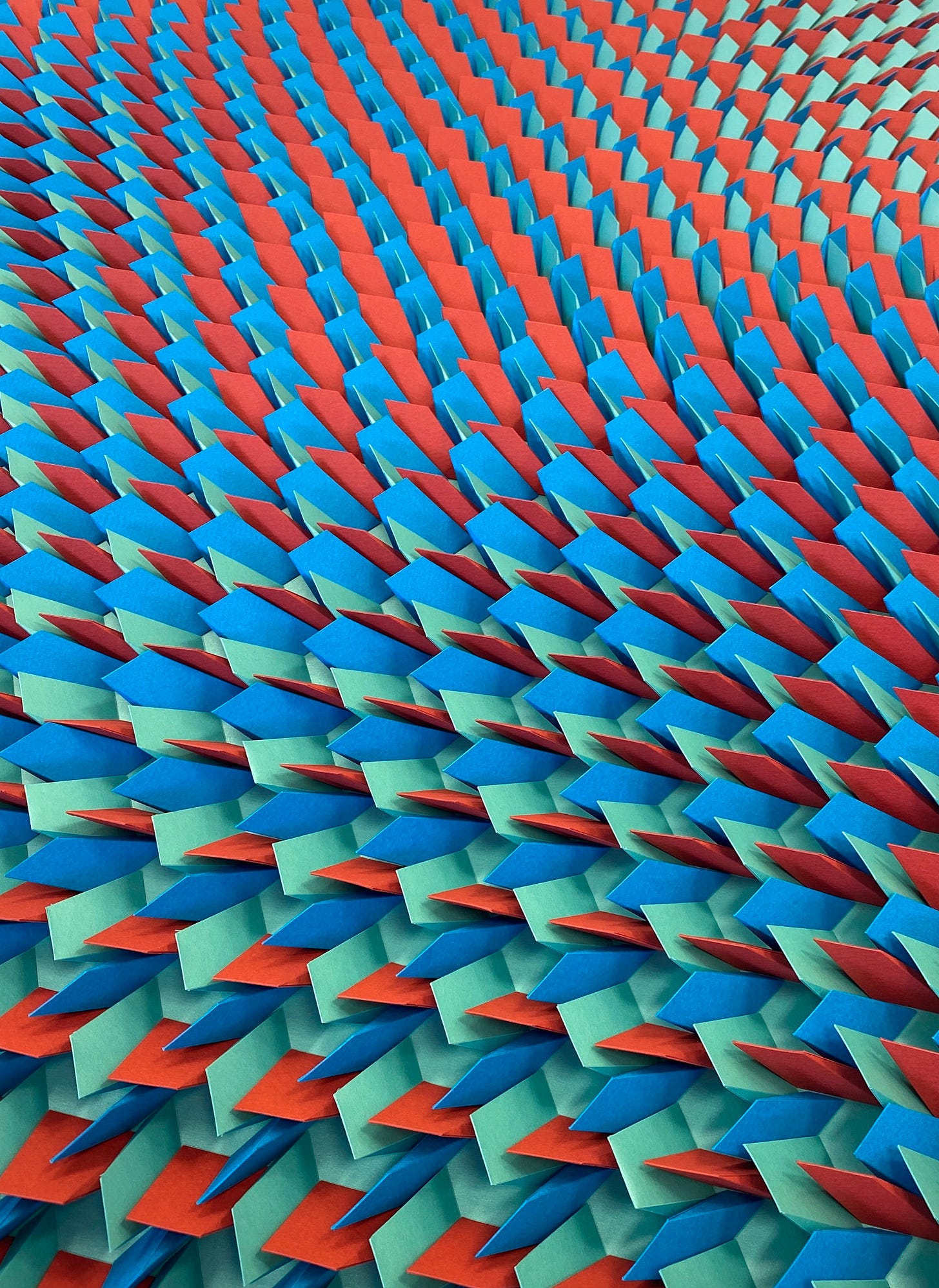
Lastly, Unfolding is back in stock on Eight Emperors. The last remaining copies of the first edition hardcover are signed and include a DIY piece for you to assemble. Leave a comment below for your chance to win a signed copy.
Best,
m
*There are notable exceptions—your nervous systems and Holly Herndons are truly pushing boundaries in parametric and AI work.




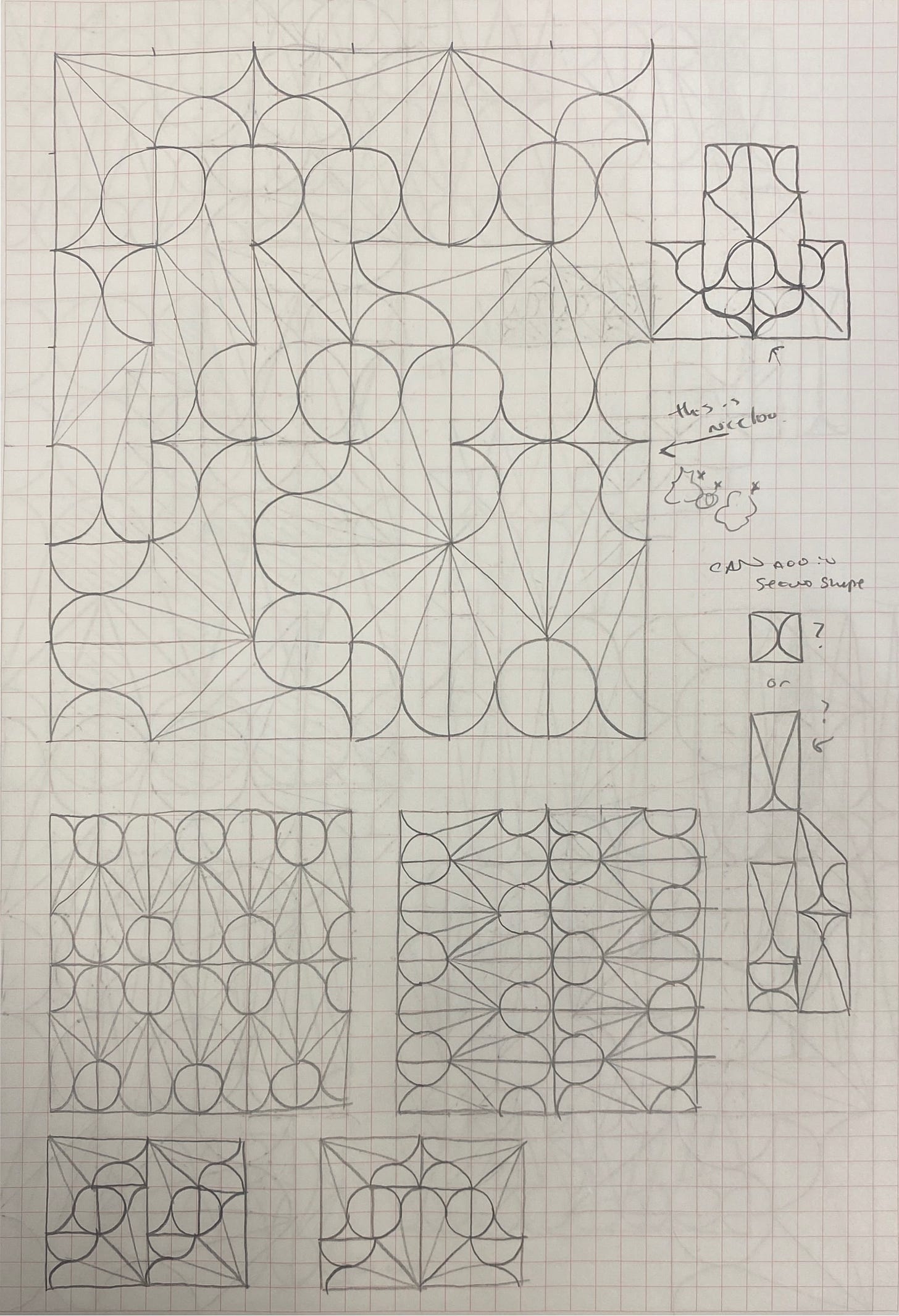
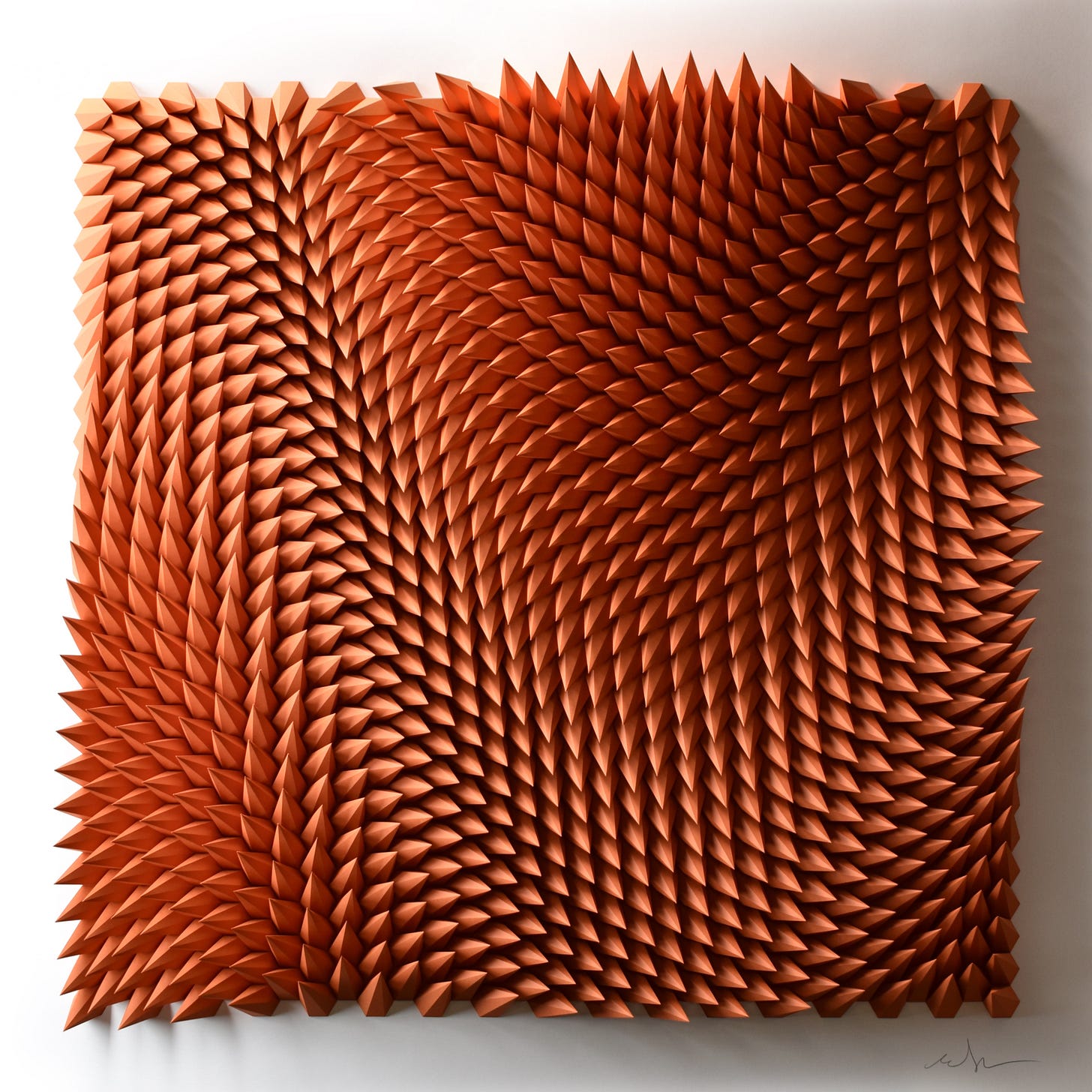

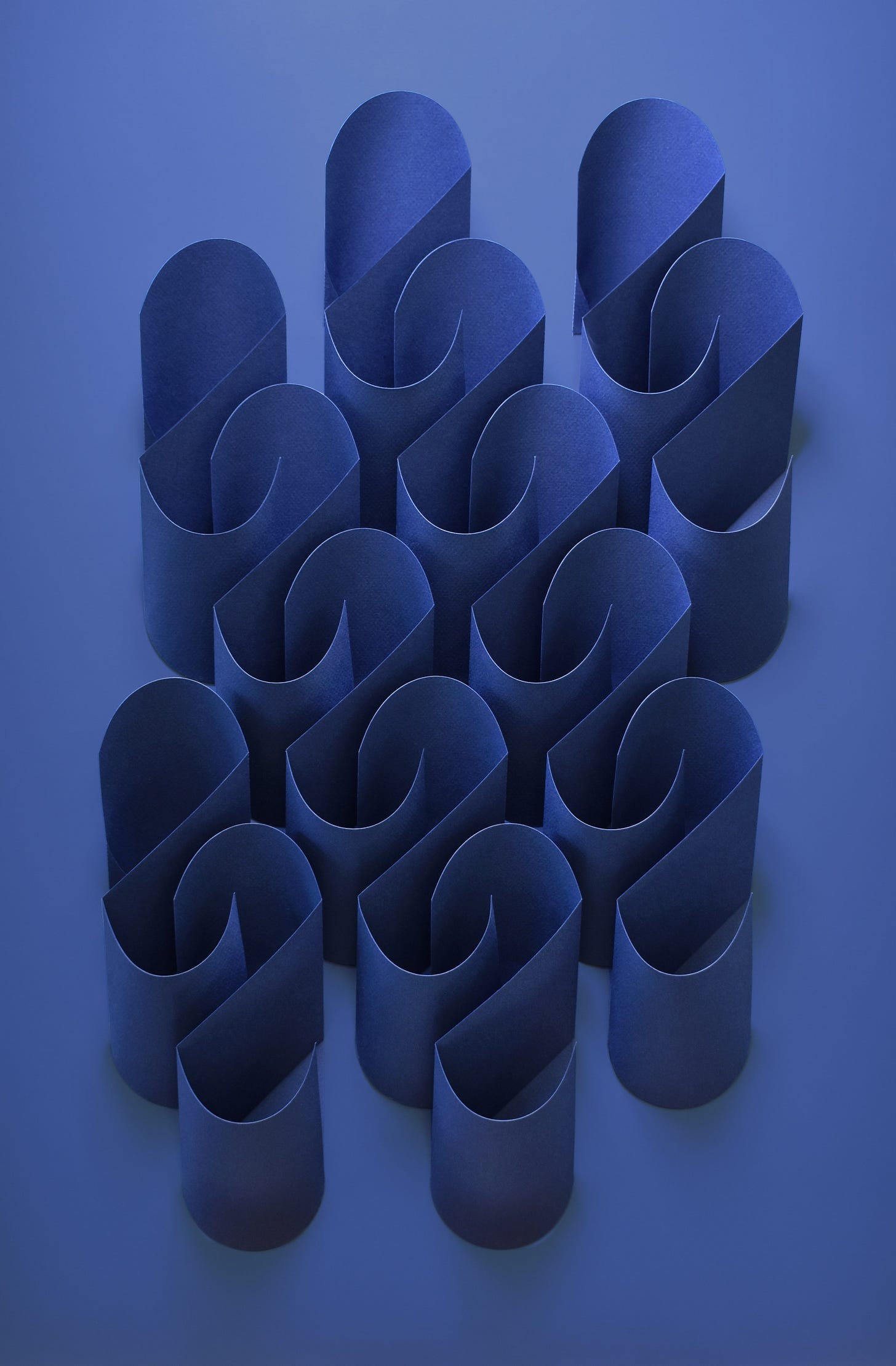
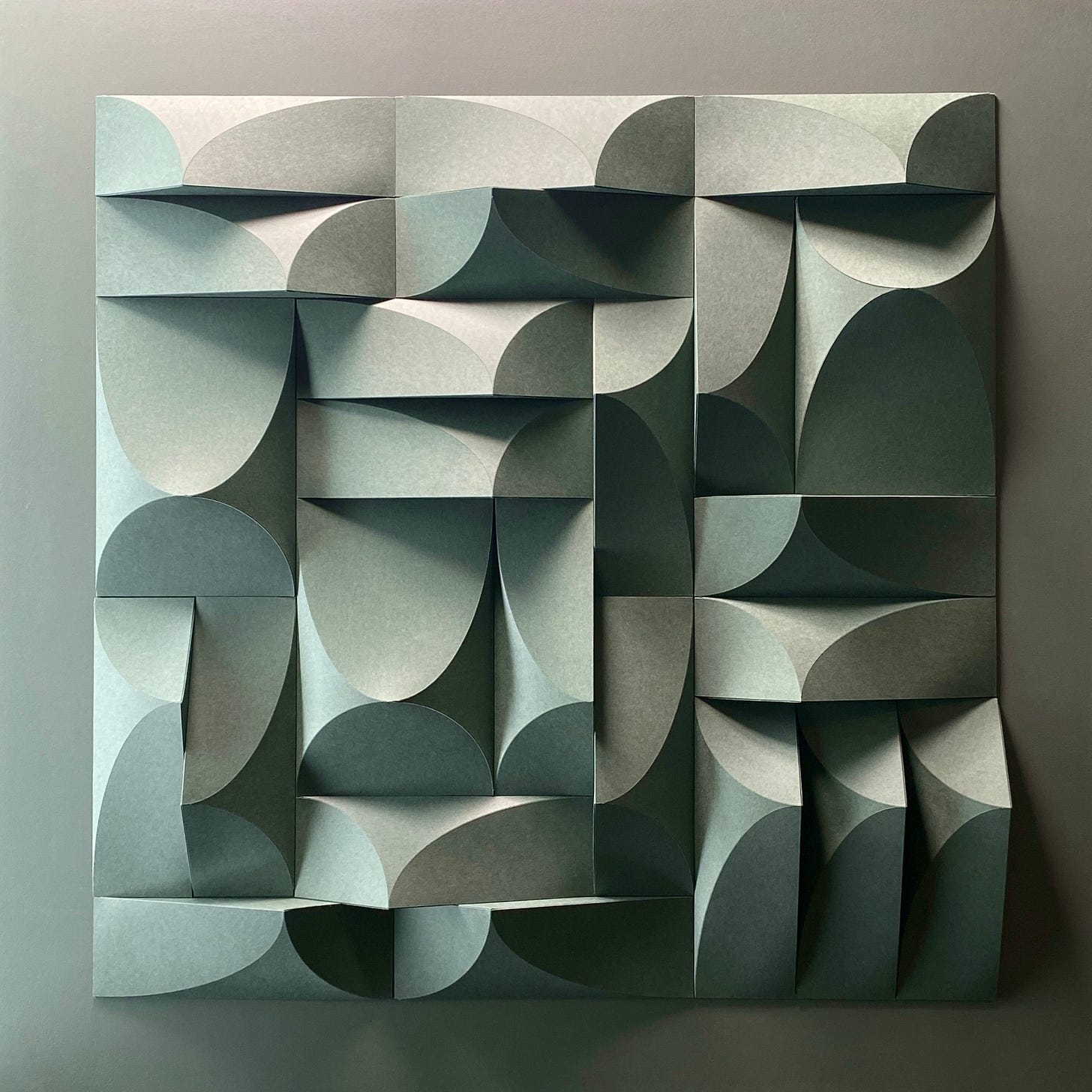
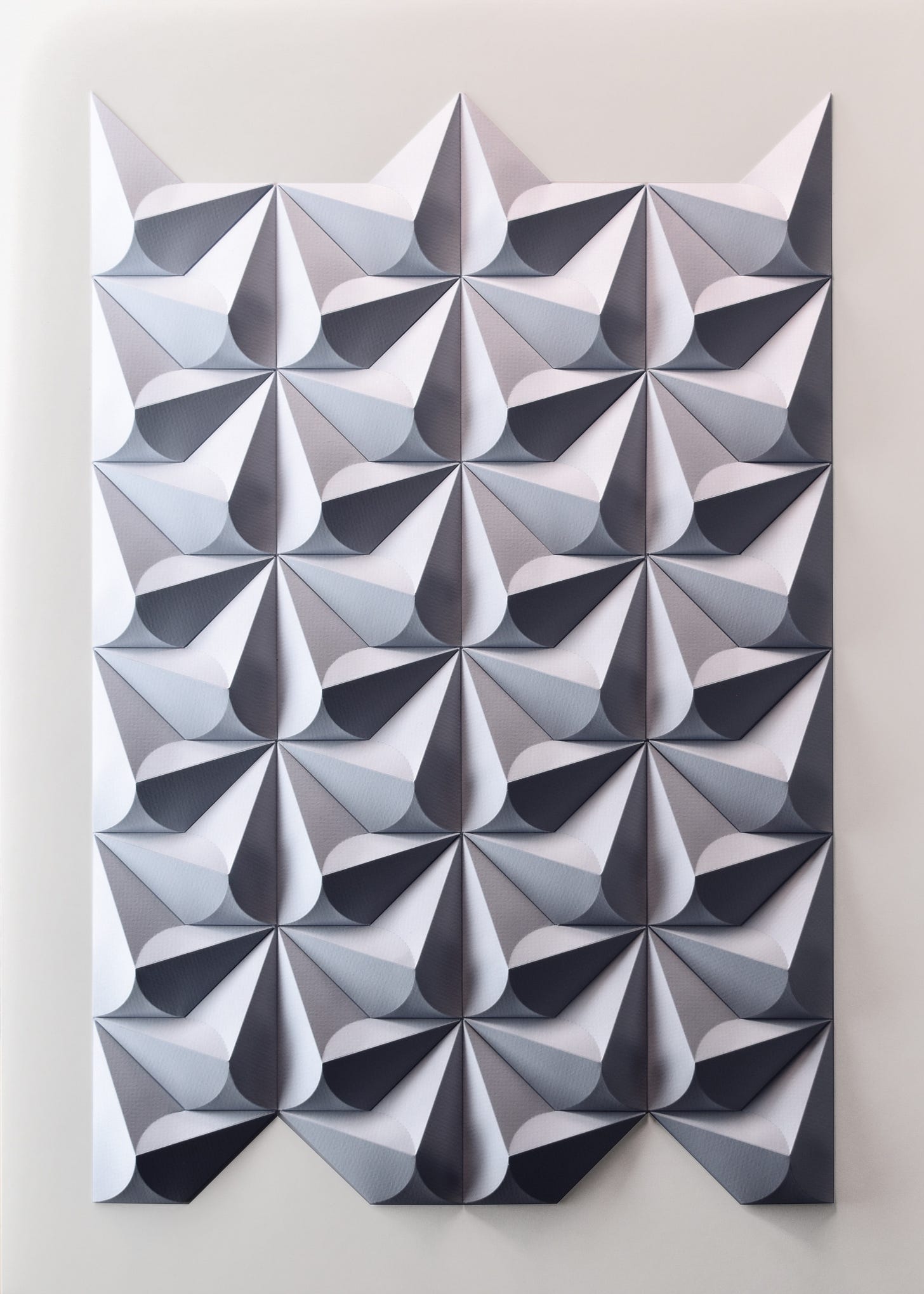
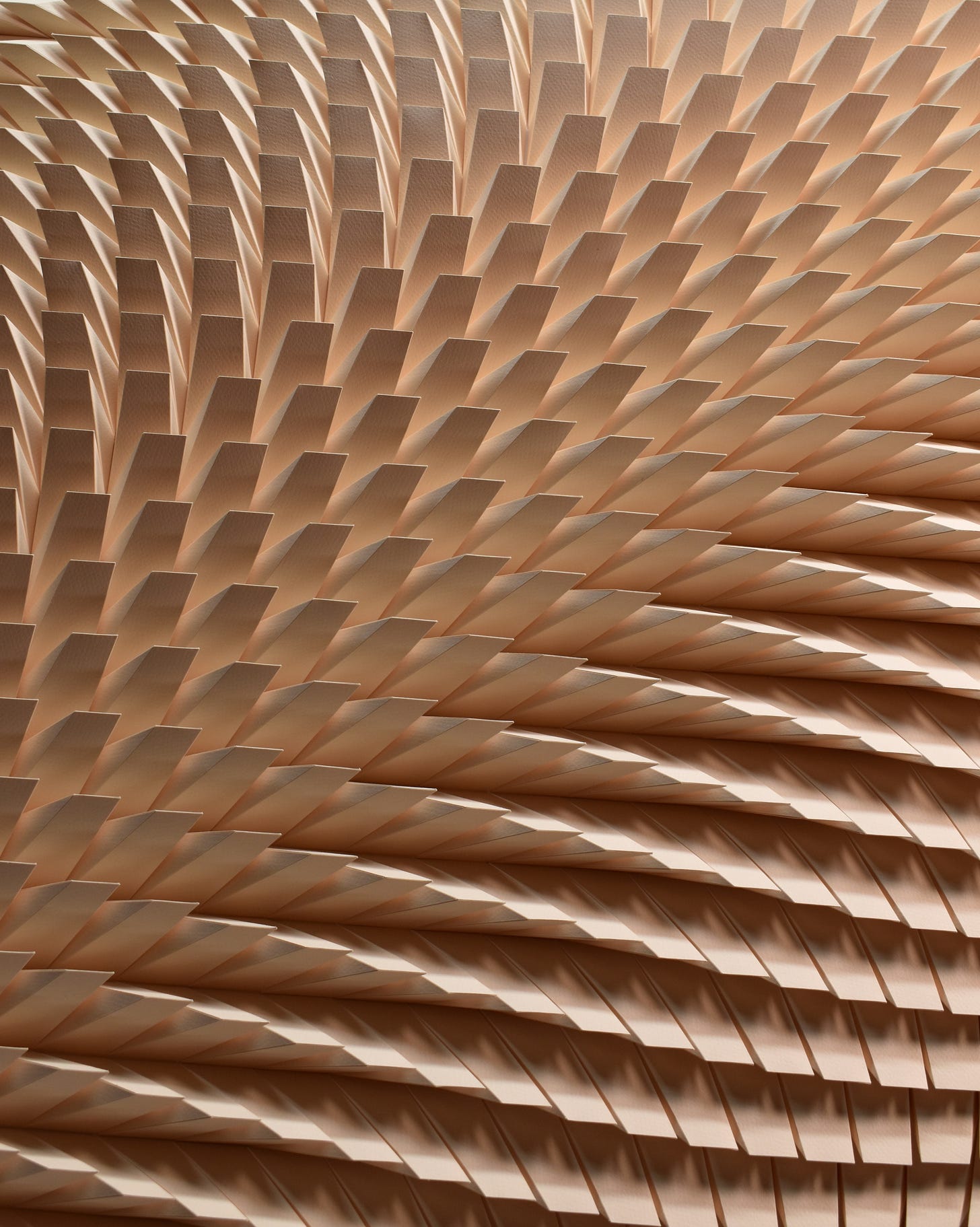
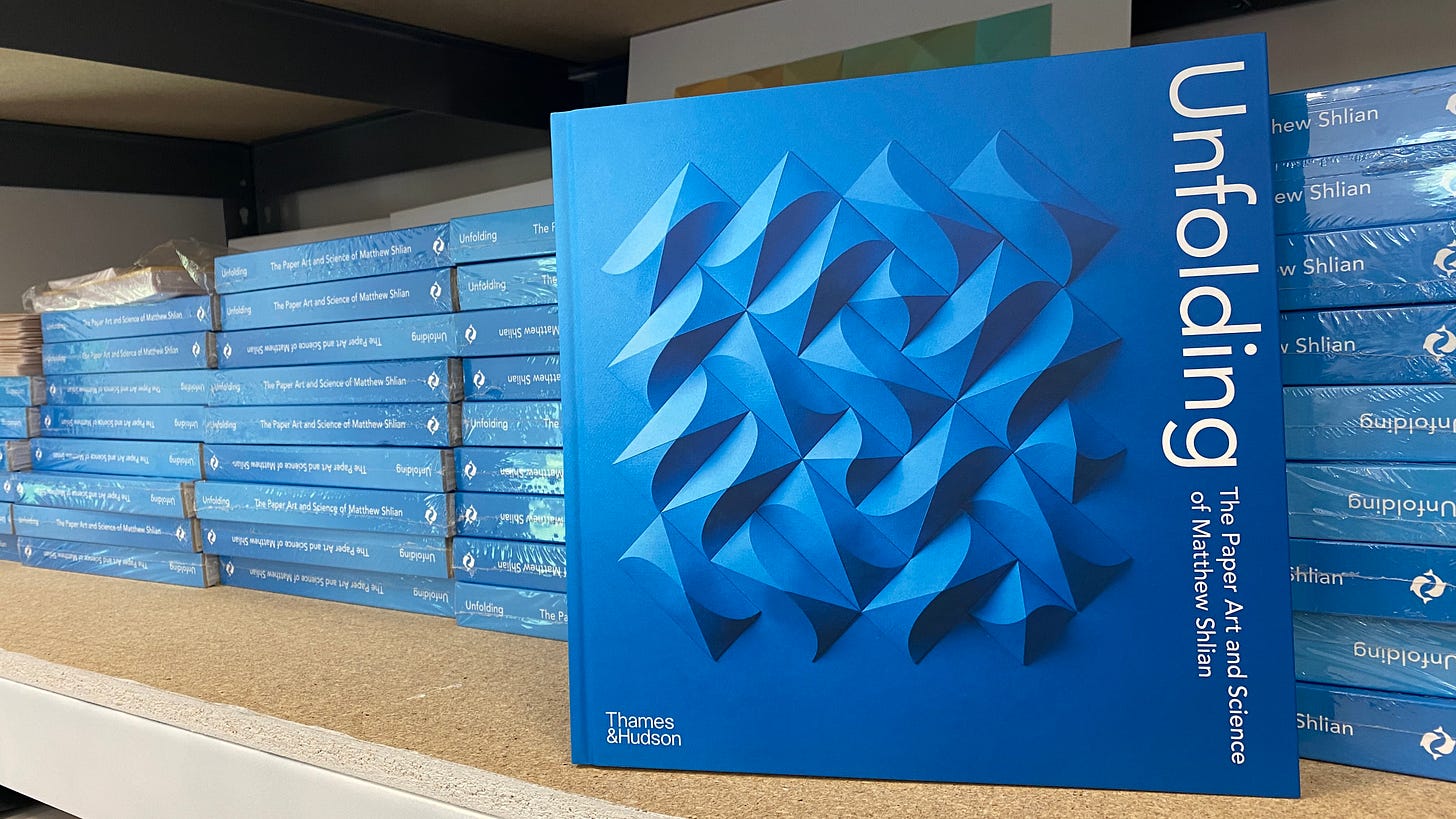
Hi Matt, I am so sorry to hear about your health problems. I have never commented before, but I really enjoy reading your posts. They feel so genuine and give me a window into how art is, at its core, something you live rather than something you do. I can’t describe how much your work and your posts mean to me. It is like a flicker or flash of light in the often dark times, in which we find ourselves. I hope you heal quickly and completely. Very Best, Mary
Hi Matt - I love reading about your process. In my own work, I have full conversations with paper, asking it what it wants to do, how it wants to do it, and frequently, 'why won't you do what I want?'. These chats only happen when I'm deep in the process, when nearly everything else ceases to exist, and I enter flow. So I get what you are saying!
Glad you are overcoming limitations with your body, and sad you'll miss those workshops. You are exactly where you are supposed to be though. Next year, maybe I'll win one of those scholarships and join you in the classroom! Until then, add me to your list of potential people that would absolutely swoon over receiving your book. Take Care. Therese.